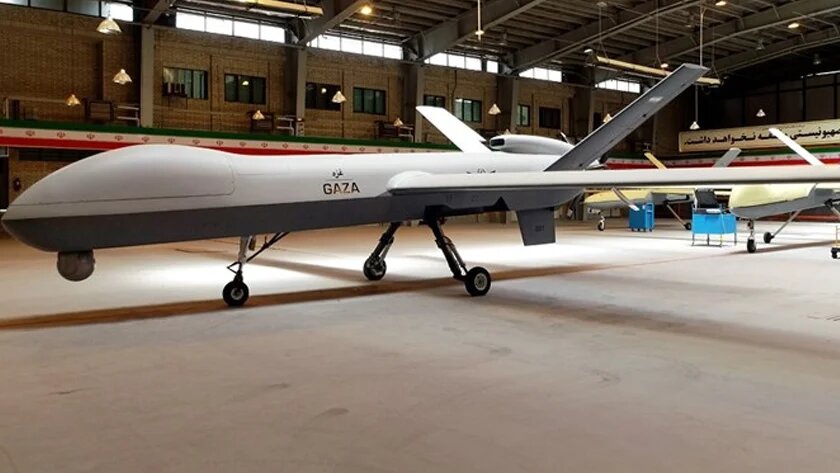IRGC Gaza drone passes flight tests, becomes operational

TEHRAN - Islamic Revolution Guards Corps’ new combat drone, called Gaza, has successfully passed flight tests and it is now fully operational.
The super-heavy combat drone, which was unveiled in May last year, has a 21-meter wingspan and a 3,100-kilogram takeoff mass and is capable of carrying a payload of 500 kg, Press TV reported on Monday.
The flight duration of the Gaza drone is 35 hours. It can soar to an altitude of about 10,668 meters, equivalent to 35,000 feet, and has a flight speed of 350 km per hour.
“Operational tests of this drone have been conducted, it is fully operational, and can be used in a variety of reconnaissance and combat missions,” the report noted.
In addition to military and defense applications, the Gaza drone can also carry out missions in monitoring forests, rescue operations, and providing assistance in natural disasters such as floods and earthquakes.
Last month, the IRGC unveiled one of its new kamikaze drones, dubbed Me’raj 504, which is specialized in attacking enemy’s defense systems.
The unmanned aerial vehicle has been designed and produced by the IRGC’s Ground Force is capable of carrying a 2.5kg explosive payload over 100 kilometers. It uses a reciprocating engine for propulsion.
Iranian military experts and technicians have in recent years made great progress in indigenously developing and manufacturing a broad range of equipment, making the armed forces self-sufficient in this regard.
Iranian officials have repeatedly underscored that the Islamic Republic will not hesitate to build up its defense capabilities, emphasizing such abilities are entirely meant for the purpose of defense and will be never subject to negotiations.
Leader of the Islamic Revolution Ayatollah Seyyed Ali Khamenei has repeatedly called for efforts to maintain and boost Iran’s defense capabilities, hitting back at the enemies for disputing the country’s missile program.
In a military parade on Monday marking National Army Day, the Iranian Army units unveiled a number of new drones and homegrown missile systems.
One of the major achievements put on display during the parade was the new generation of Ababil drones, named Ababil-5, according to Tasnim.
The new design of the drone’s nosecone suggests improved aerodynamic efficiency and reduced radar cross-section.
At least three Ababil-5 drones were displayed in the event, one equipped with 4 Almas (diamond) missiles, another one carrying three Qaem bombs, and the third one armed with a heavy Qaem-class bomb.
A new suicide drone also joined the Army’s fleet of UAVs on Monday. The homegrown aircraft, called Omid (hope), is comparable with Israeli Harop drone. The delta-wing Iranian drone is propelled by a powerful piston engine.
Omid, which has joined the club of Iranian suicide drones such as Arash, Kian, and Karrar, could be flown from both ground and offshore launchers.
The Army also unveiled three missile systems at the event.
One of them is Fath-360 ground-to-ground missile system, adapted to fire Naze'at rockets.
The Iranian Fath missile weighs 790 kg and can carry a 150-kg warhead with a velocity of Mach 4 at a distance of 120 km.
Another missile system displayed on Monday was the tactical version of Sayyad, comprised of radar and missile launchers at the same time. This feature increases the mobility and combat survivability of tactical Sayyad.
The third product loaded on trucks in the ceremony was Dezful air defense system, known as the Iranian version of Russian-made Tor-M1.
Mounted on a rolling chassis, Dezful air defense system has been provided to the Army Air Defense and the IRGC Aerospace Force.
